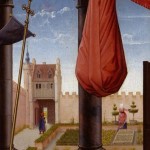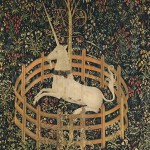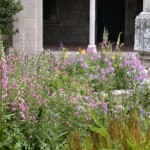Landscape Design in the Middle Ages
 |
 |
 |
Above, from left to right: Detail from The Annunciation (17.190.7); Detail from The Unicorn in Captivity (37.80.6); Trie Cloister Garden in bloom.
???fruit trees that grow easily, such as cherries and apples, should be planted in place of walls; or, what is better, willows or elms or birch trees should be planted there, and their growth should be controlled for several years, both by grafting and by stakes, poles, and ties, so that walls and a roof might be formed from them.
???Book III: “On the Gardens of Kings and other Illustrious Lords.” Piero de’ Crescenzi, Liber ruralium commodorum (1305-09). (See Catena, the Bard Graduate Center’s Digital Archive of Historic Gardens and Landscapes for more information.)
In my undergraduate studies in landscape and architecture, I examined how the natural landscape is used to determine designs for parks, gardens, and public spaces. I took part in several design processes, which included research on site analysis, interviewing potential patrons of public spaces, building models of future designs, and using plants to blend artistic design with nature. I learned to look at the land as a palimpsest rather than a blank slate, and to examine its many layers of use throughout history, understanding that context is an important influence on new designs. Now, as the new assistant horticulturist here at The Cloisters, I’ve found more levels of meaning to my studies, and am inspired to think about design issues from a landscape historian’s perspective. Read more »
